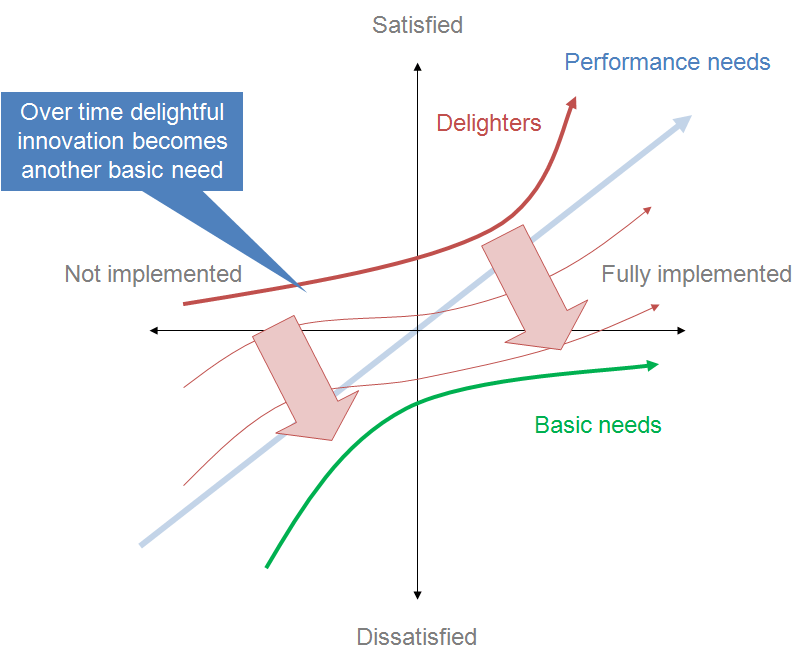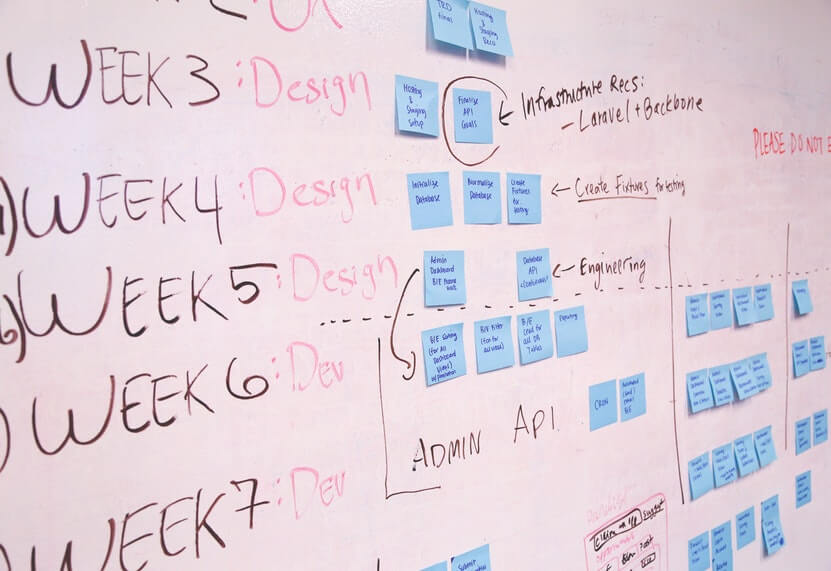Prioritizing product features is a key responsibility of a product manager. Knowing what to prioritize and, more importantly, when can make all the difference for the success of your product. Once your architecture is decided and built, you need to progress into building product features. Your team needs to not only build the right features, but build them in the right order. In my consulting work I often see teams making mistakes that ultimately stemmed from improper prioritization of product development.
There are many ways to prioritize what your team will ultimately build. Which process works best for your team will have much to do with what you are building and who you are building it for. However, you should consider at least a few of the various options that have proven to be successful for prioritizing your ideas and features into your product development process. The process we are going to discuss today is called the Kano model. The Kano model was developed by Professor Noriaki Kano in the 1980s. More on that here.

Kano Model
You can see a visual representation of the Kano model in the figure above. I know this graphic looks overwhelming, but don’t freak out yet. It is actually rather straightforward. You just need to know what’s going on here. First, we have three main lines on the graph. In red we have delighters, in blue we have performance needs, and in green we have basic needs. I’m a car guy so to describe what each of these mean I’m going to work with analogies related to cars based on a customer’s wants and needs. Since each of these categories describes a particular feature, I’ll provide some examples. A basic need on a car would be something like brakes and mirrors. Standard safety equipment which is required to safely operate a vehicle. A performance need on a car can be thought of as horsepower or fuel economy. Product features that are directly related to performance improvements. Lastly, a delighter feature on a vehicle would be special forward and rearward facing cameras or self-parking ability. Features that greatly differentiate your product and make it seem crazy cool to the customer.
If you’d like to get these posts delivered directly to your inbox sign up for our weekly newsletter.

Get our awesome product content delivered daily-ish to your inbox
Now that you have an idea what those lines mean, we can begin to understand how this graph works. The Kano model is intended to give product managers the ability to compare and prioritize product features from the perspective of differentiation. The more delighers you have in your product, the more differentiated and exciting your product will be to the customer. This is not to say you should ignore basic or performance needs. A self parking car wouldn’t be very practical without brakes! Ideally, your product should have a healthy blend of all three of these categories. Using the Kano model effectively means you are not becoming too bloated in one particular category. The Kano model is also a great way to keep your product differentiated and give your product marketing department some heavy firepower to play with.
Another very important component to our Kano model graph above are the red arrows that are pointing down and to the right. What these arrows are intended to show is that over time delighters trend towards basic needs. To further our automotive analogy, back in they day air-conditioning in a vehicle used to be a delighter. Today it is considered to be a basic need. What this means is that the Kano model tells you that you have to keep an eye on your competition and industry as a whole. A successful product feature you’ve implemented that falls into the delighter category is highly likely to be incorporated into your competitors products over time. As this happens, that feature will shift from delighter to basic need. What this means for your team is that you should always be prioritizing a certain amount of delighters into your product development process so you can stay at least a step ahead of the competition.
There are many ways to prioritize your product ideas and features. The Kano model is an effective method to use for prioritizing based on differentiation. It is an exciting way to think about building your product because it can motivate you to build a product that is truly differentiated. Differentiation is one of the biggest keys to product success.
If you’d like to learn more about product management or talk more about the services I offer as a product management consultant please visit our NxtStep website or reach out to me directly at sean@nxtstep.io. Keep disrupting.







